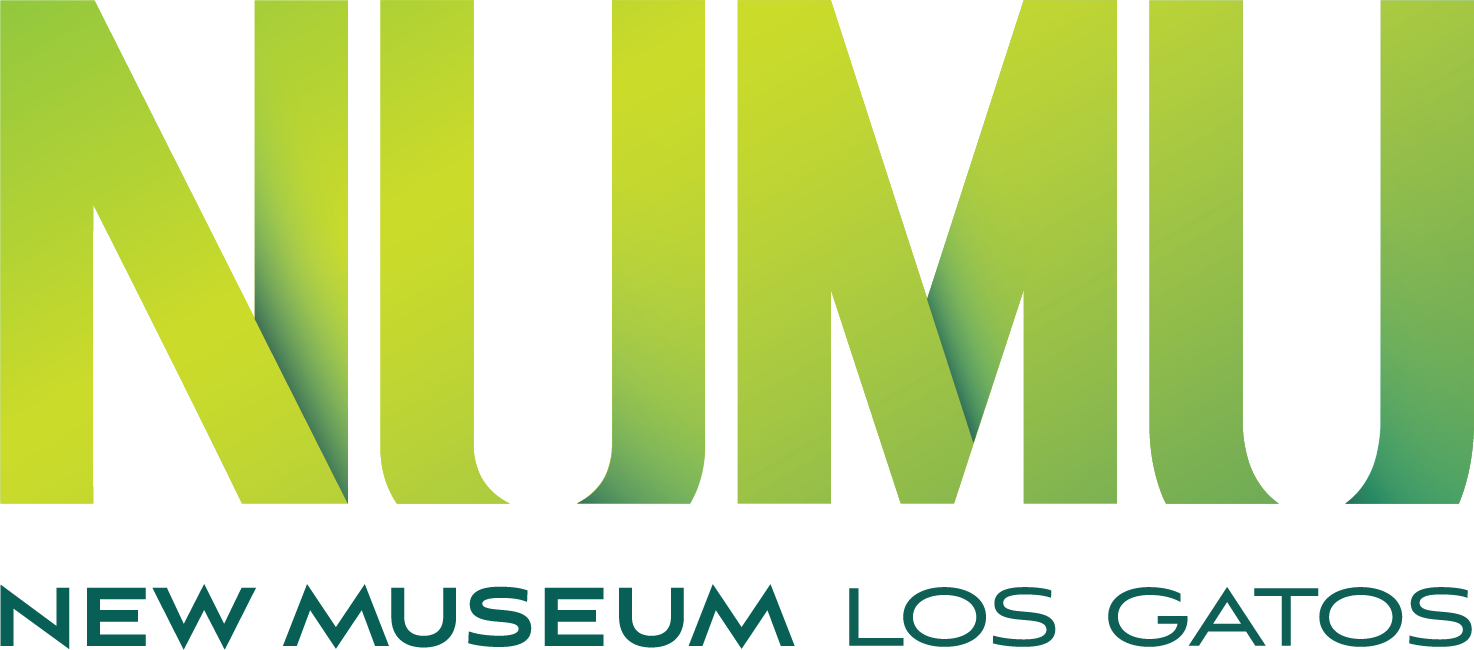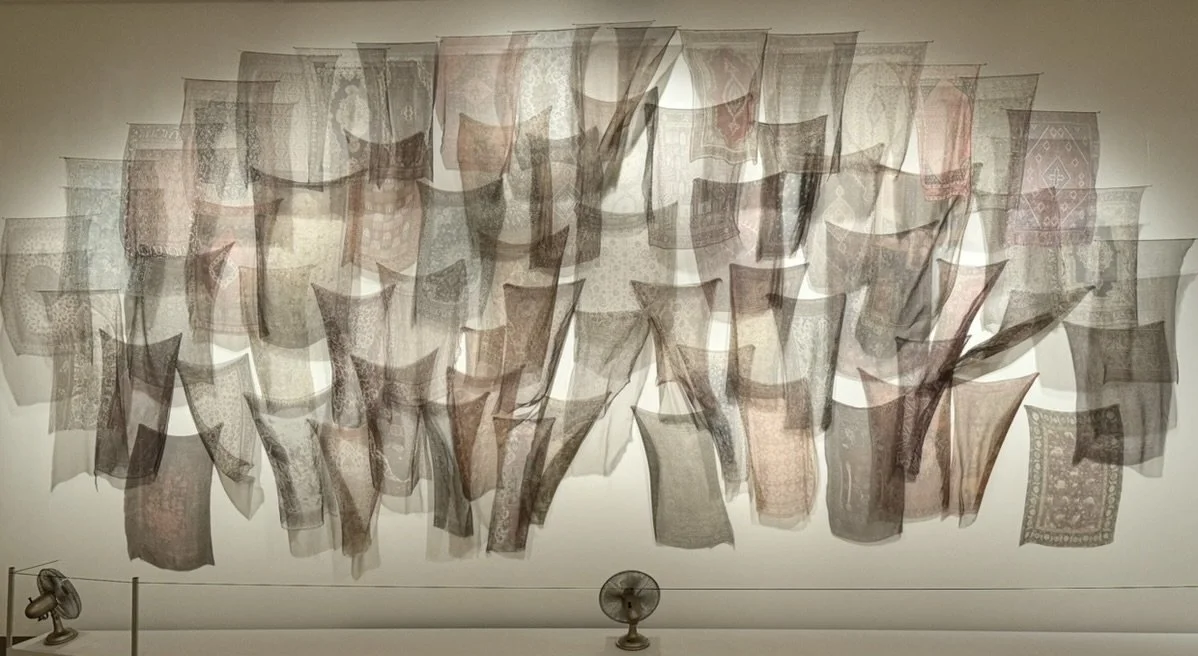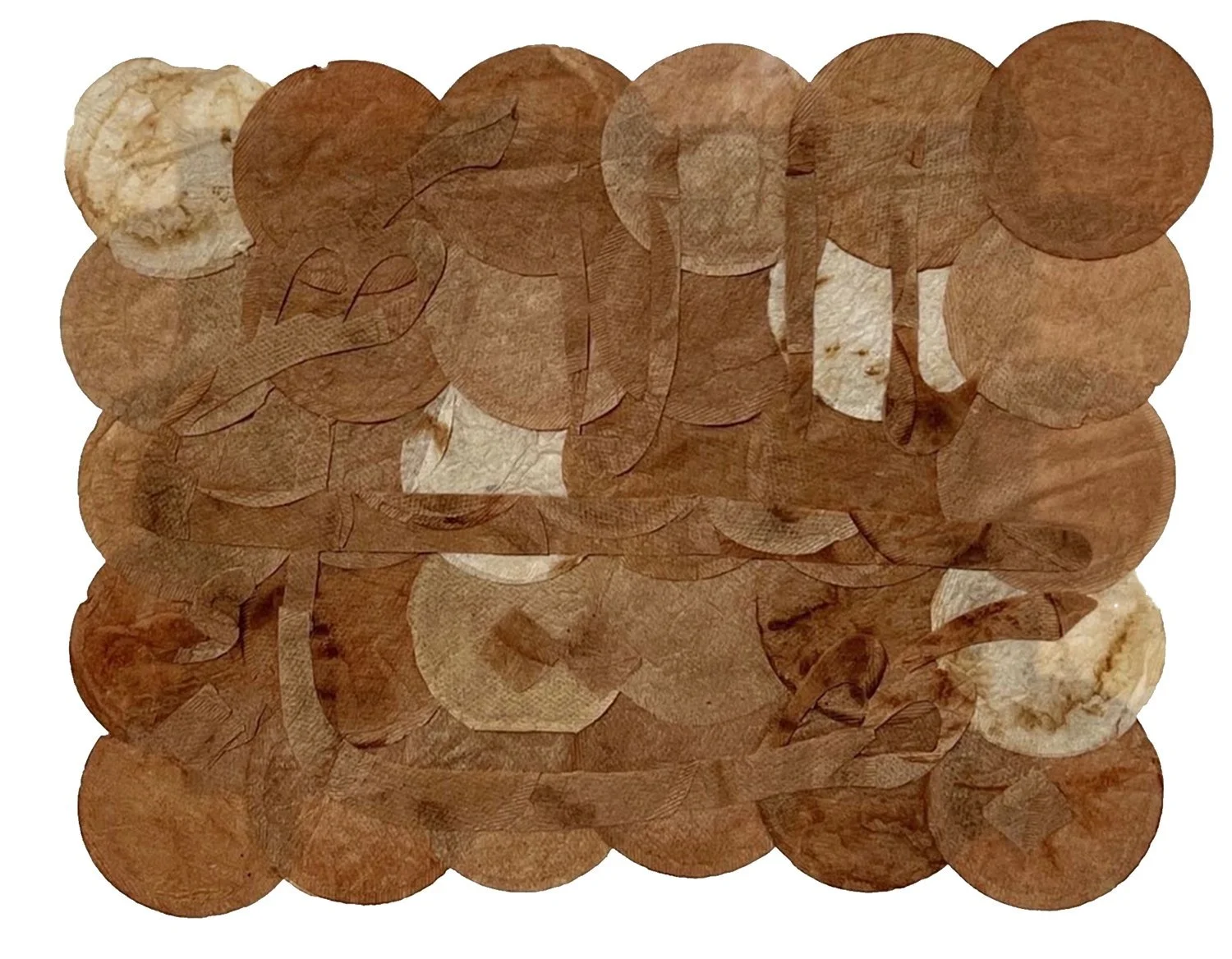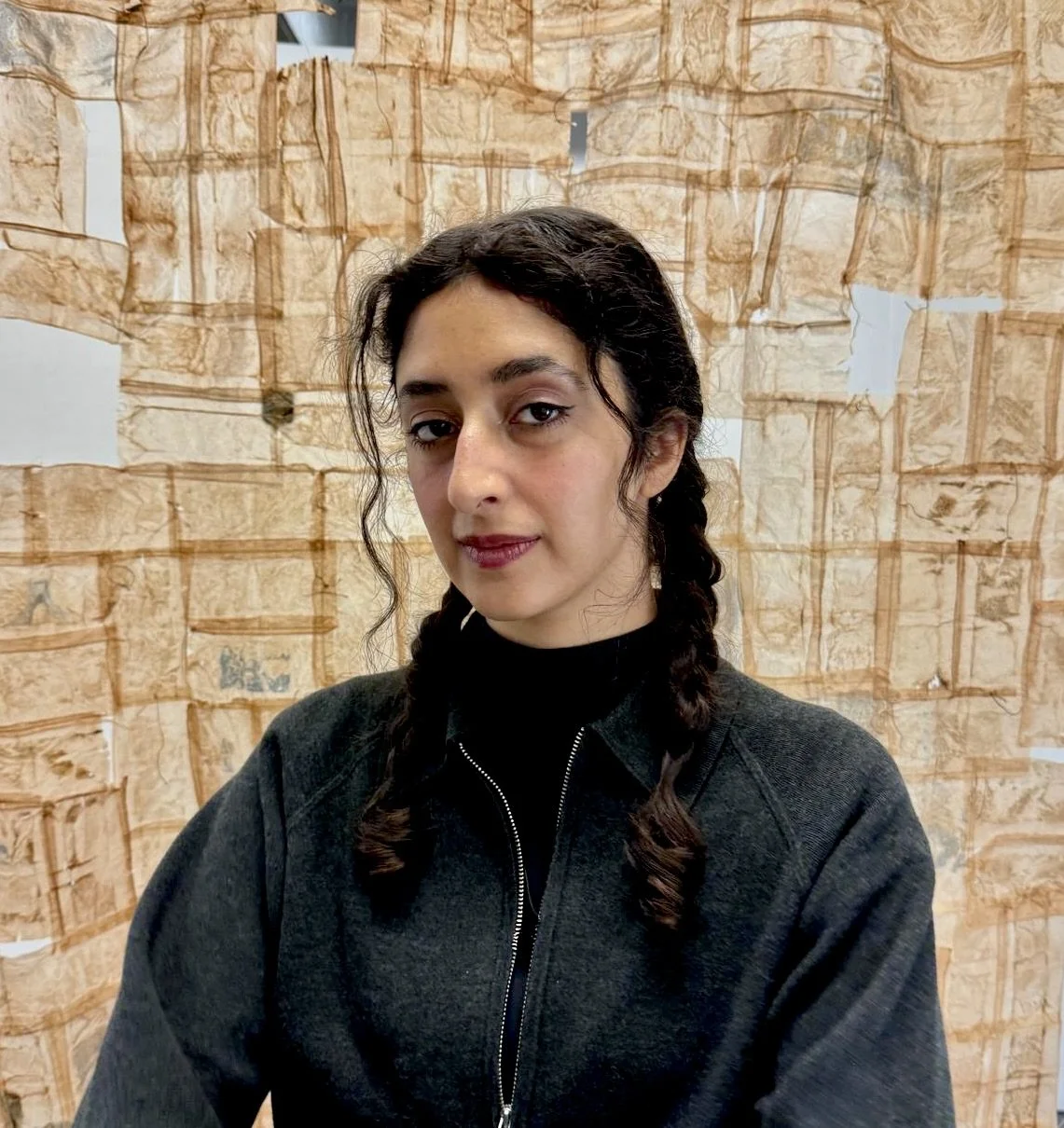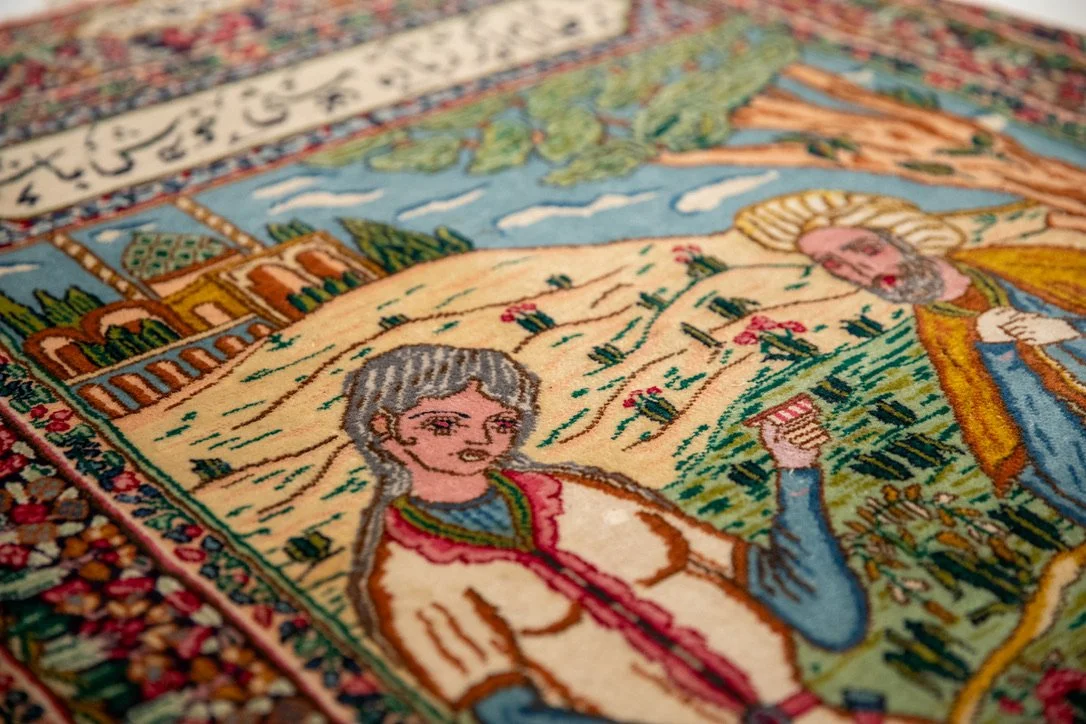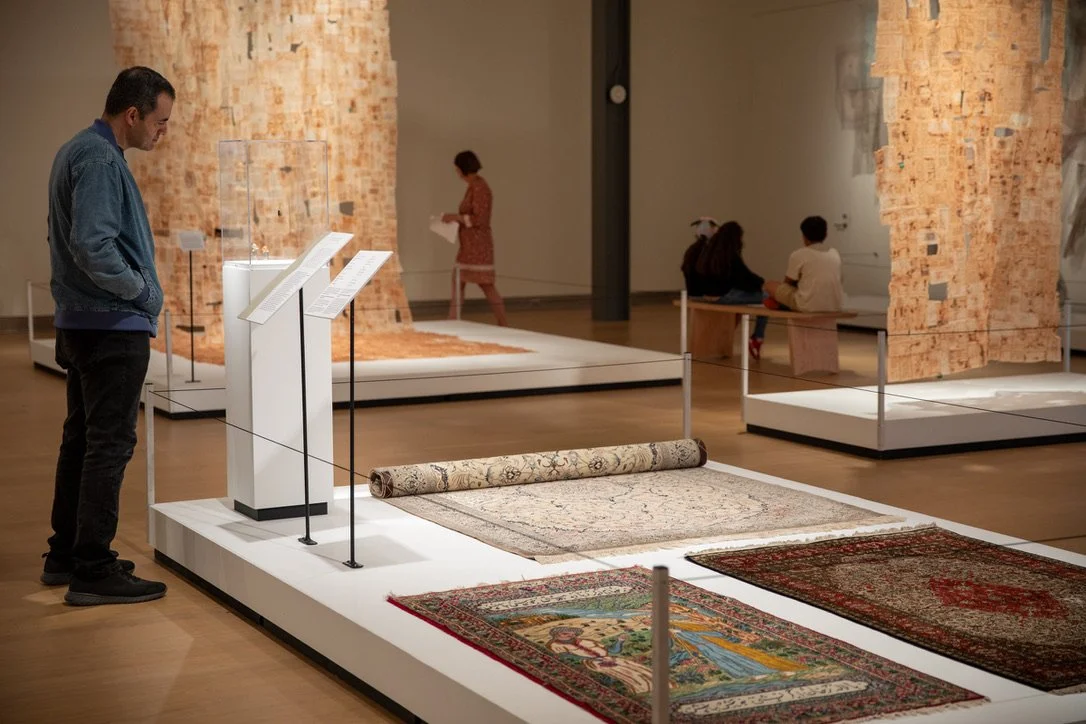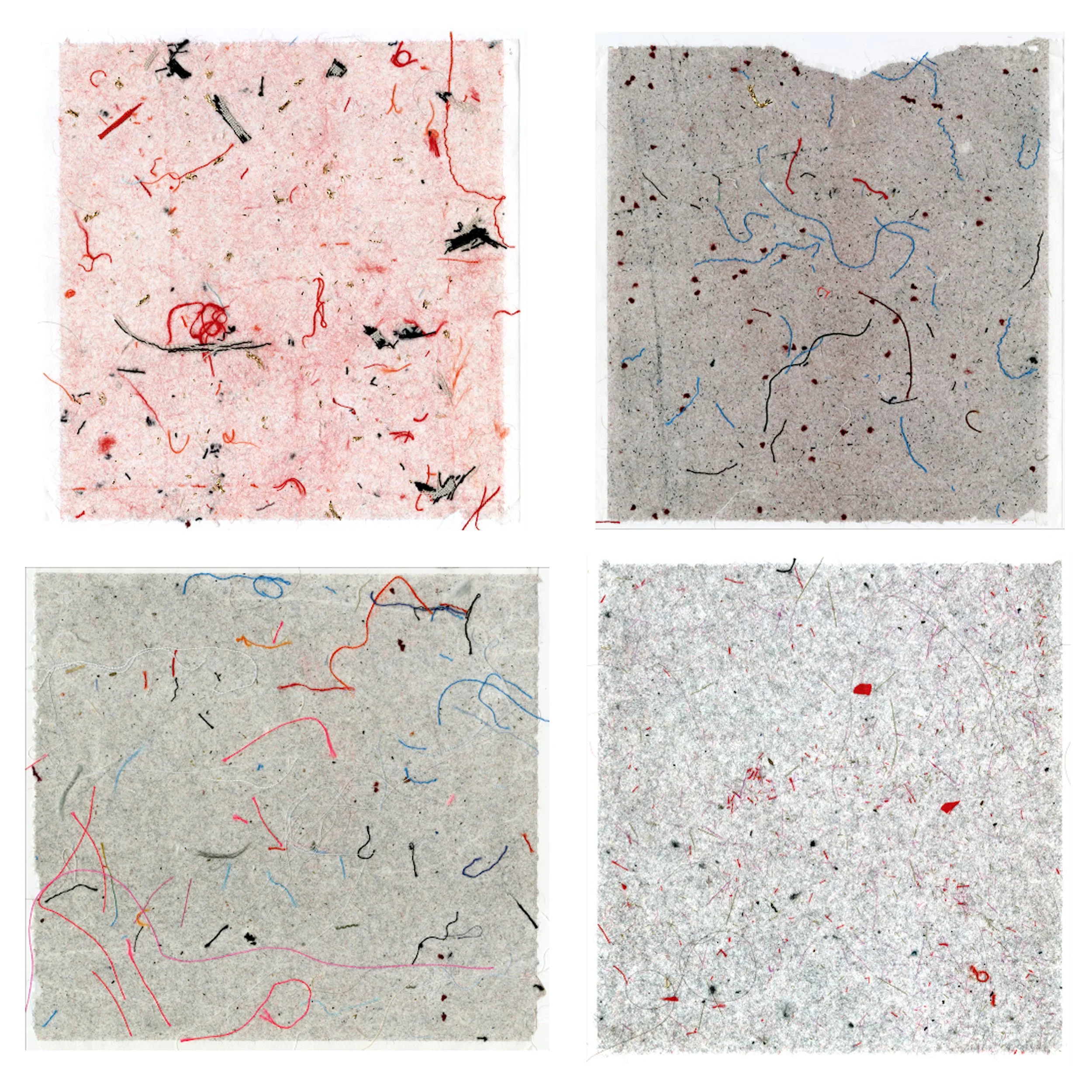“I am an interdisciplinary artist working with an emphasis on installation, sculptural photography, textiles, and printmaking. Drawing from my positionality as a second-generation Iranian refugee, my artwork explores the complexities of belonging and placemaking through archival research and intergenerational communication with a diasporic lens. I focus on everyday practices of belonging and visual culture, as produced by migrants, and reflect on the traces of diaspora to investigate cultural memory, history, and temporality.
I make my art to highlight the experiences of the children of immigrants and diasporic communities. Drawing from my own experiences, I depict the liminal spaces we inhabit and the negotiations between language, culture, and belonging across generations.
As a member of a diasporic community, I make my art to bring new narratives into the art world around questions of belonging and whose memories are valued. I make my work for communities whose stories and memories are disappearing or were never written into an archive. “
Where did you grow up?
I was born and raised in Oceanside, California. My parents migrated to the United States before I was born, during the Iranian Revolution of 1979.
Photograph courtesy of The Mingei Museum
What is a story from your childhood that left a big impression on you?
I grew up hearing about the ways my family members had to quickly leave their homeland and how different family members were imprisoned by the Iranian Government, beaten, tortured, and some killed.
When my grandfather left Iran for a business trip, he thought he would return in 2 weeks and packed a briefcase with only one suit. He was never able to go back to Iran. To survive he began working as a door-to-door Persian rug salesman in Germany and later Canada.
This story inspired me to look into the folklore of Persian magic carpets as something magical that can transport anyone anywhere in the world in a moment. I started to think about the migrant journey through these stories and how it mirrors an exile and a bittersweet moment of having escaped persecution but also not being able to return to your homeland.
Photograph courtesy of The Mingei Museum
Remnants (2020 - present (ongoing)), Lint rolled paper, 5”x5”
How do you approach traditional and contemporary craft?
I see my engagement with traditional crafts as a reflection of my own intersectional Iranian-American identity, as well as my family’s history, which I continue to learn about.
A few years ago I found out that many of my family members are from the village of Kashan which is world famous for its rug production. I am using the means (materials) I have on hand to connect to that history of rug production while also questioning what this history means for me.
For example, every day in my studio I take a lint roller and clean up the sewing remnants from my textile practice and each lint roller square becomes like an abstracted rug. These “rugs” are threads to stories that I only have partial access to. When laid out together, they tell their own story of my fragmented understanding of my heritage.
What is the biggest drive for you in your practice?
To remember and reflect on refugee and migrant stories which are often lost, forgotten, and not archived. I am interested in how the traumas of having to leave a homeland continue to affect a family for generations, and I am compelled to confront this history and the generational traumas that stem from this past. I want to rethink our relationships with our families and histories while reimagining a new future for displaced communities.
My Mother Came in The Rain (2024), Photograph courtesy of ICA San José
Haptics of The Fugitive Image (2024)
What are you doing now and where have you shown recently?
I am currently working on a project named My Mother Came in the Rain, which explores the unexpected return of a family album from Iran after 40 years. This project thinks about ideas of translation, embodied archives, pain, and trauma in the body, but most of all, the moments of joy and humor that surround these experiences. An early version of this piece is up now at ICA San José.
I am also partway through a Ph.D. at UC Santa Cruz in the film and digital media department. My research is primarily about the Iranian diaspora, thinking through intergenerational communication, and how history gets passed down through memory and translation.
